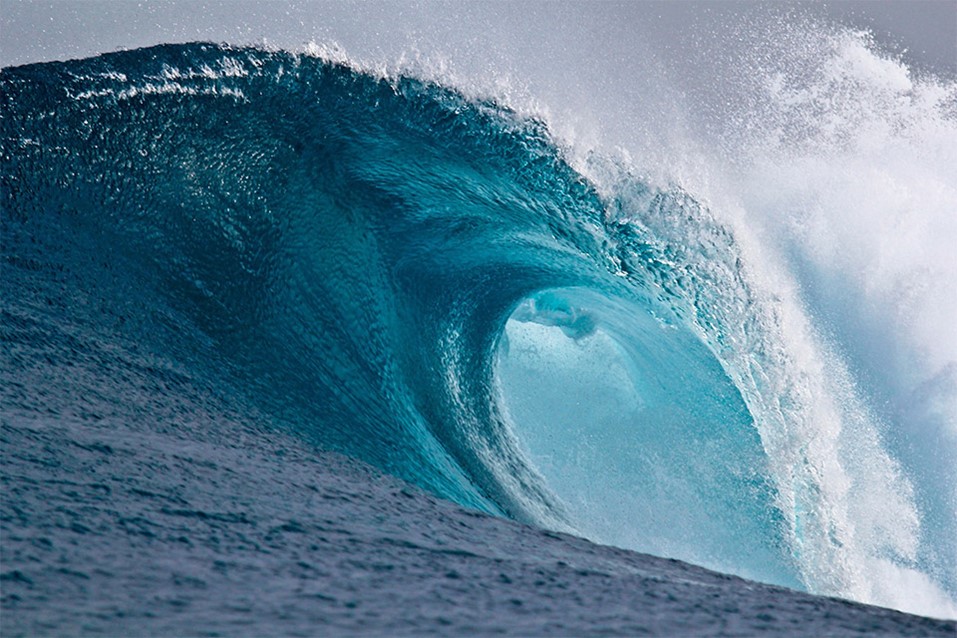
Credit: NOAA, public domain, via Wikimedia Commons
When you watch waves crash on the beach, you’re seeing the visible end result of many invisible forces.
Waves are formed near or very far from shore, usually by wind—the first invisible force.
As wind blows over the sea, surface friction transfers its energy to the water. How fast, how far, and for how long the wind blows determines how much waves grow.
When the wind stops blowing, the waves stop growing—but they don’t stop traveling.
A wave is not actually water traveling but instead another invisible force: energy traveling through the water. When a wave passes, water molecules lurch forward then back, coming to rest in nearly the same place. But that movement transfers energy to the next water molecule...and so on.
Uninterrupted, this wave energy can travel thousands of miles through open ocean, sometimes for more than a week, before finally reaching a shoreline.
As the water grows shallower, another invisible force comes into play: friction against the ocean bottom, which slows the base of the wave.
But the top of the wave keeps moving at its original speed, eventually crashing forward over the wave base. The shape of that wave break is determined by the unseen topography below it.
In some places, deep undersea canyons channel and concentrate wave energy as it reaches shore, to form some of the largest waves in the world.
Spectacular sights, formed out of sight.
Background
Synopsis: Most ocean waves start out as tiny ripples on the sea surface generated by wind. While individual water molecules oscillate in place as a wave passes, waves transmit energy through the water until they break along shorelines. If unobstructed, wave swells can travel across ocean basins for a week or more, but how waves break depends on shoreline bathymetry. Earth’s largest waves tend to be amplified by submarine canyons and have achieved heights of nearly 100 ft (30 m) in perfect conditions.
- Most ocean waves are generated by wind, and wind is generated by uneven heating of Earth’s surface. So, both waves and wind are ultimately generated by the sun.
- The sun heats Earth unevenly, warming the equator more than the poles.
- As hot air rises, cooler air is sucked into the void, causing wind.
- Wind creates frictional drag along the water surface that produces ripples that organize and grow into waves as the wind continues to blow, amplifying them.
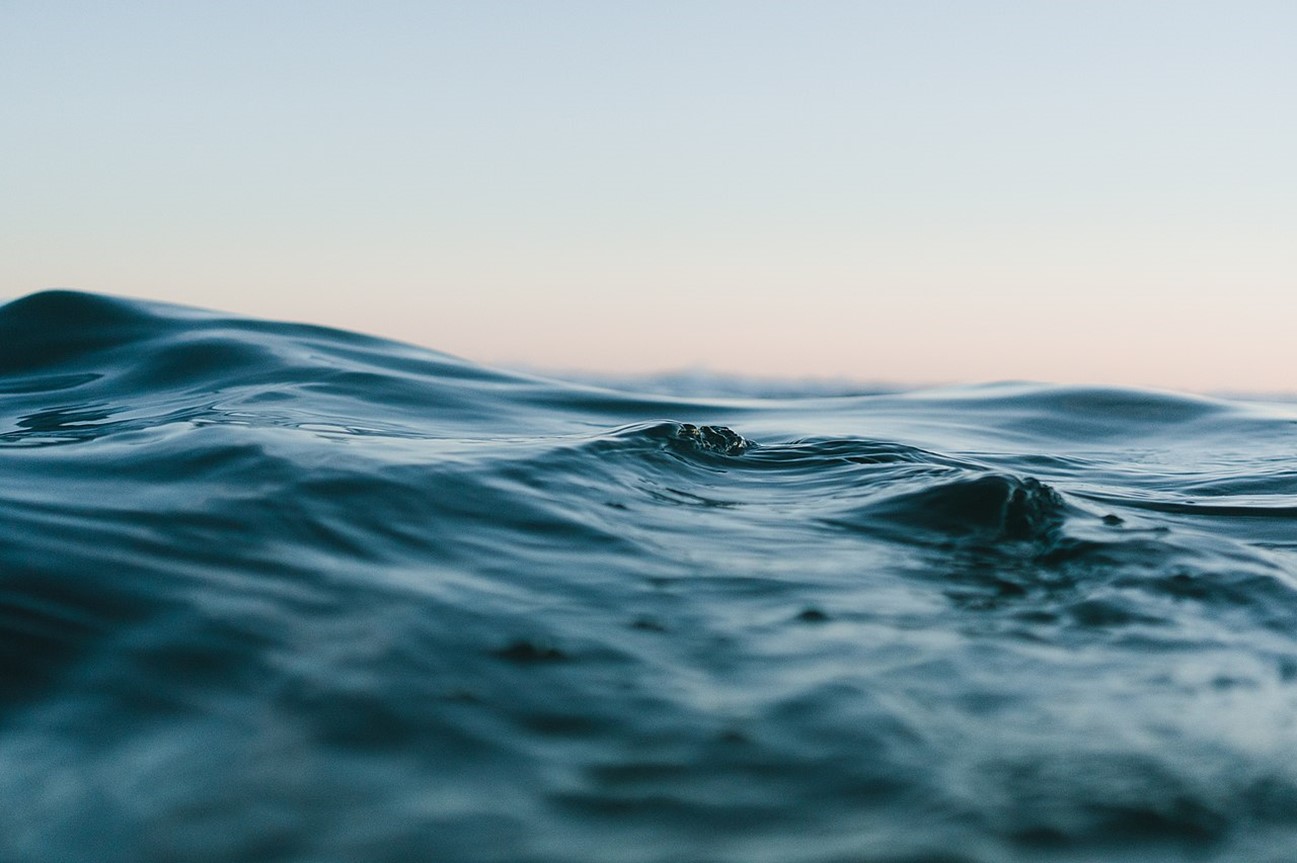
Ocean surface waves start off as wind generated ripples on the sea surface.
Credit: Matt Hardy, public domain, via Wikimedia Commons - (Waves may also be generated by tides and geological events, as discussed in many previous EarthDate episodes.)
- The amount of energy transferred to waves by storm wind is influenced by three main factors. If all three are big, large waves will result.
- Wind speed at the locus of the storm.
- Duration of the storm, or how long the wind blows over the water.
- Size of the storm, or fetch, described as the distance over which wind can blow uninterrupted. As a storm moves across the sea, the traveling fetch multiplies its static fetch, contributing to larger waves.
- If the wind stops, waves will stop growing, but they will continue to travel until they break along a shoreline.
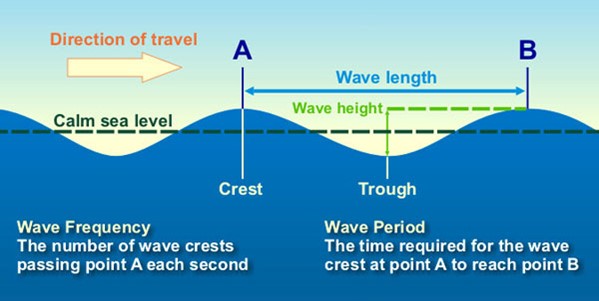
Ocean wave terminology: A crest is the uppermost part of the wave while a trough is the lowest point on a wave. Wave length is the horizontal distance between one crest and the next crest (or trough and trough). Wave base is half the wavelength, the depth below which oscillation ceases. Wave height is the vertical distance between a wave's trough and its crest. Wave frequency is the measure of how many waves pass in a certain amount of time.
Credit: NOAA, public domain, via Wikimedia Commons
- Waves don’t move water; they move energy through water.
- Waves are produced by the transfer of wind energy to the air–water interface as kinetic energy.
- In the open ocean, this kinetic energy propagates as a circular oscillation of water molecules along the path of the wave.
- Wave motion extends to a depth called wave base below which oscillation ceases. This depth is typically half the wavelength.
- Water molecules in a wave act like a conveyor belt to move kinetic energy long distances through the ocean, but water molecules don’t move far from their original location.
- As water shallows to less than wave base, an approaching wave’s particle oscillation becomes elliptical, and erosion begins as wave motion impacts the seafloor.
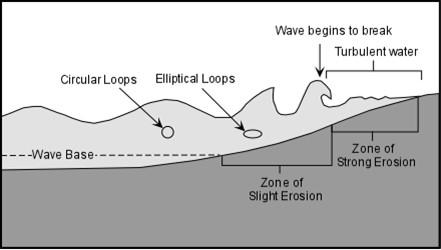
As waves enter water shallower than wave base (half their wavelength) they are influenced by bathymetry. Circular oscillations become elliptical, the wave steepens as its amplitude increases, and the waves crowd each other as wavelength decreases.
Credit: Earth Science Australia- As the wave interacts with the seafloor, the bottom of the wave slows down while the top of the wave keeps moving and the shape steepens up, converting kinetic energy into potential energy.
- As waves slow in shallow water, following waves catch up to them as their wavelength is reduced, especially obvious as waves bend around headlands.
- If waves arrive more than 10 seconds apart, it is a good bet they were generated in a distant location; whereas, if they arrive 5 seconds or less apart, they were likely to have been generated locally.
- Waves may arrive along a shoreline from different sources. Constructive interference may amplify them while destructive interference may reduce them.
- Waves break in four different ways, depending on shoreline bathymetry, which can change as water depths vary with the tides.
- Spilling breakers: If the ocean floor rises gently, a wave will steepen until the crest spills down its face, slowly dissipating energy as turbulent whitewater.
- Plunging breakers: When the seafloor rises rapidly or includes sudden depth changes, the crest of a wave steepens to vertical then curls over, crashing down with a violent release of energy. This favorite wave of surfers is even more popular when waves hit the beach at an angle creating the infamous “tube.”
- Collapsing waves are between plunging and surging waves and result in a crest that never fully breaks, producing a foamy turbulence.
- Surging breakers occur when waves have long wavelengths relative to wave height or when beaches are very steep. The base of the wave quickly moves up the beach expending its energy while the crest collapses, so the wave doesn’t really appear to break and may not create any whitewater.
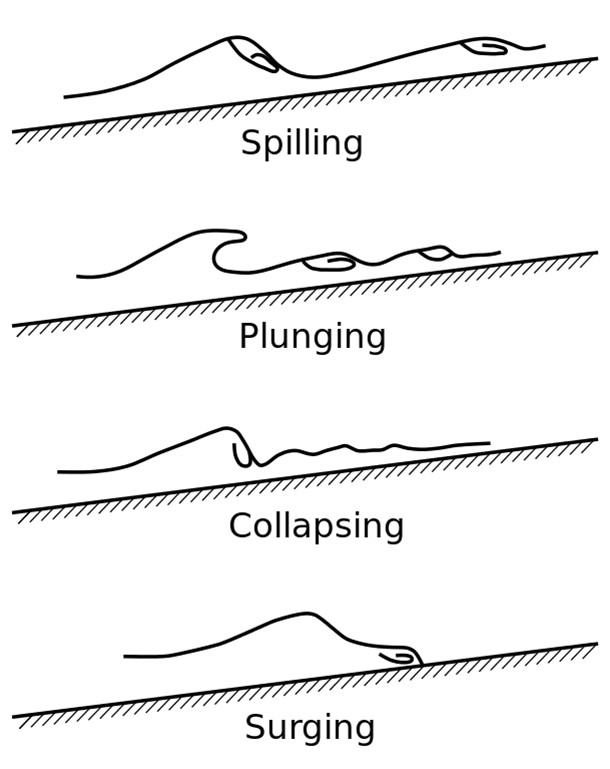
Four types of breaking waves depend largely upon seafloor bathymetry.
Credit: Kraaiennest, via Wikimedia Commons
- The largest surfing waves on Earth occur in specific areas under specific conditions.
- Large plunging waves require steeper shorelines, but they can’t be too steep.
- Beaches with deep submarine canyons are known to produce Earth’s largest waves because the funnel shaped canyons focus wave energy up the steep canyon mouth toward the shoreline. Examples include California’s Mavericks and Portugal’s Nazaré Beaches.
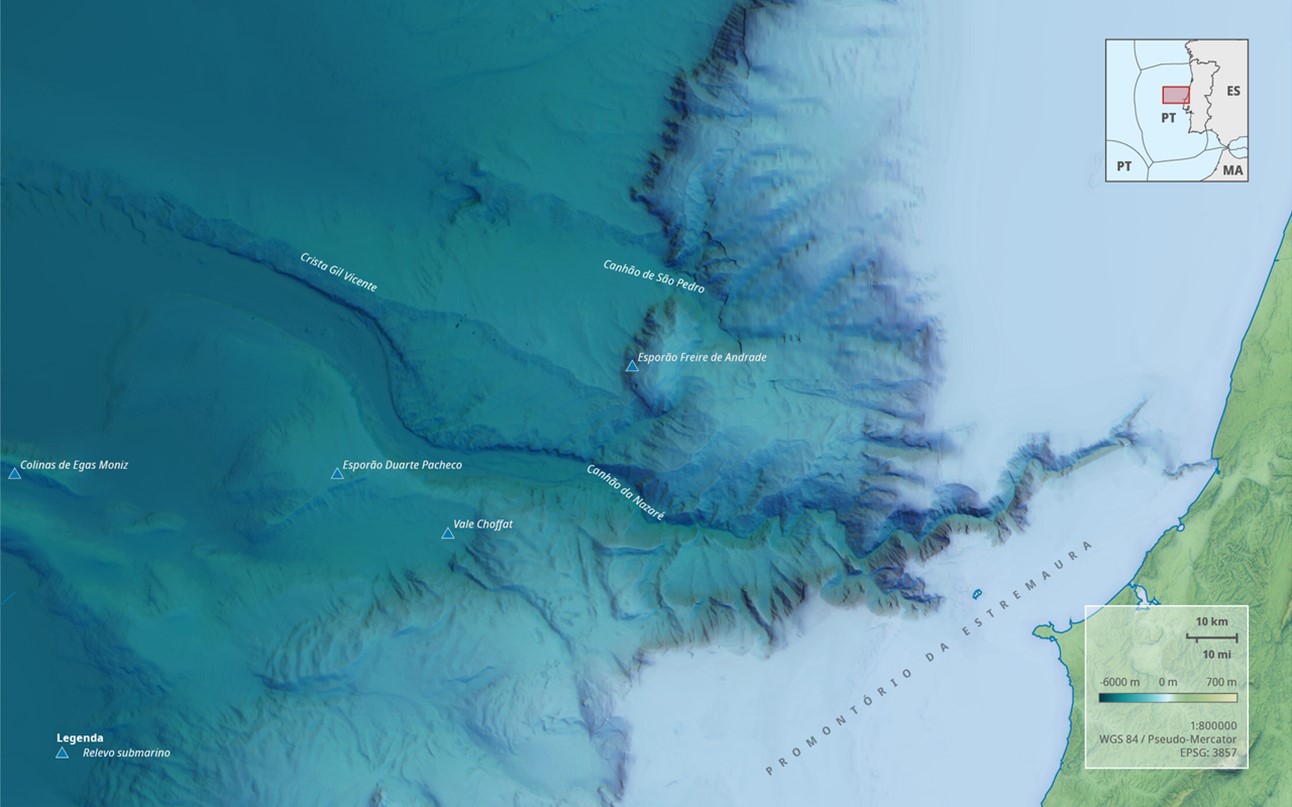
The Nazaré Canyon, off Portugal’s Atlantic coast.
Credit: Rúdisicyon, via Wikimedia Commons - On October 29, 2020, one Nazaré wave that was 86 ft (26.2 m) in height was surfed by Sebastian Steudtner of Germany for a Guinness World Record title.
- Nazaré Canyon is 143 mi (230 km) long and 3.1 mi (5 km) deep.
- These “perfect” conditions usually occur in late fall or early winter. As swells formed in distant storms in the Atlantic Ocean approach the shoreline, the canyon focuses their deeper wave energy so that it rushes up the canyon walls toward shore where it joins slower moving shallow incoming wave fronts to produce constructive interference on an epic scale. These waves may be further heightened by strong offshore winds and strong longshore currents.
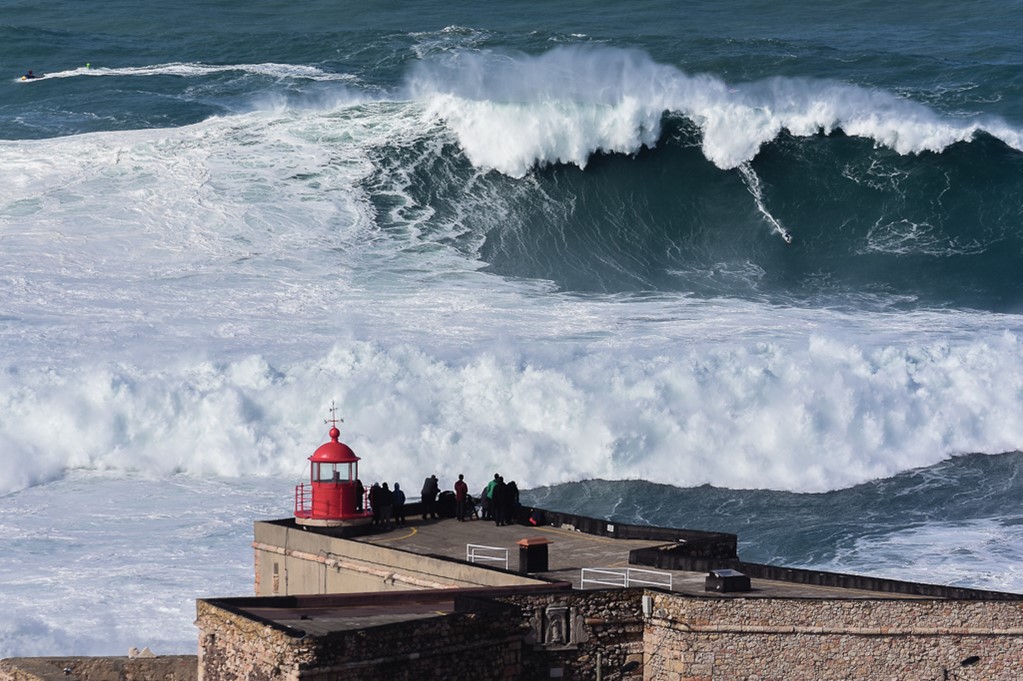
The Praia do Norte (North Beach) was listed in the Guinness Book of World Records for the biggest waves ever surfed.
Credit: Luis Ascenso from Lisbon, Portugal, via Wikimedia Commons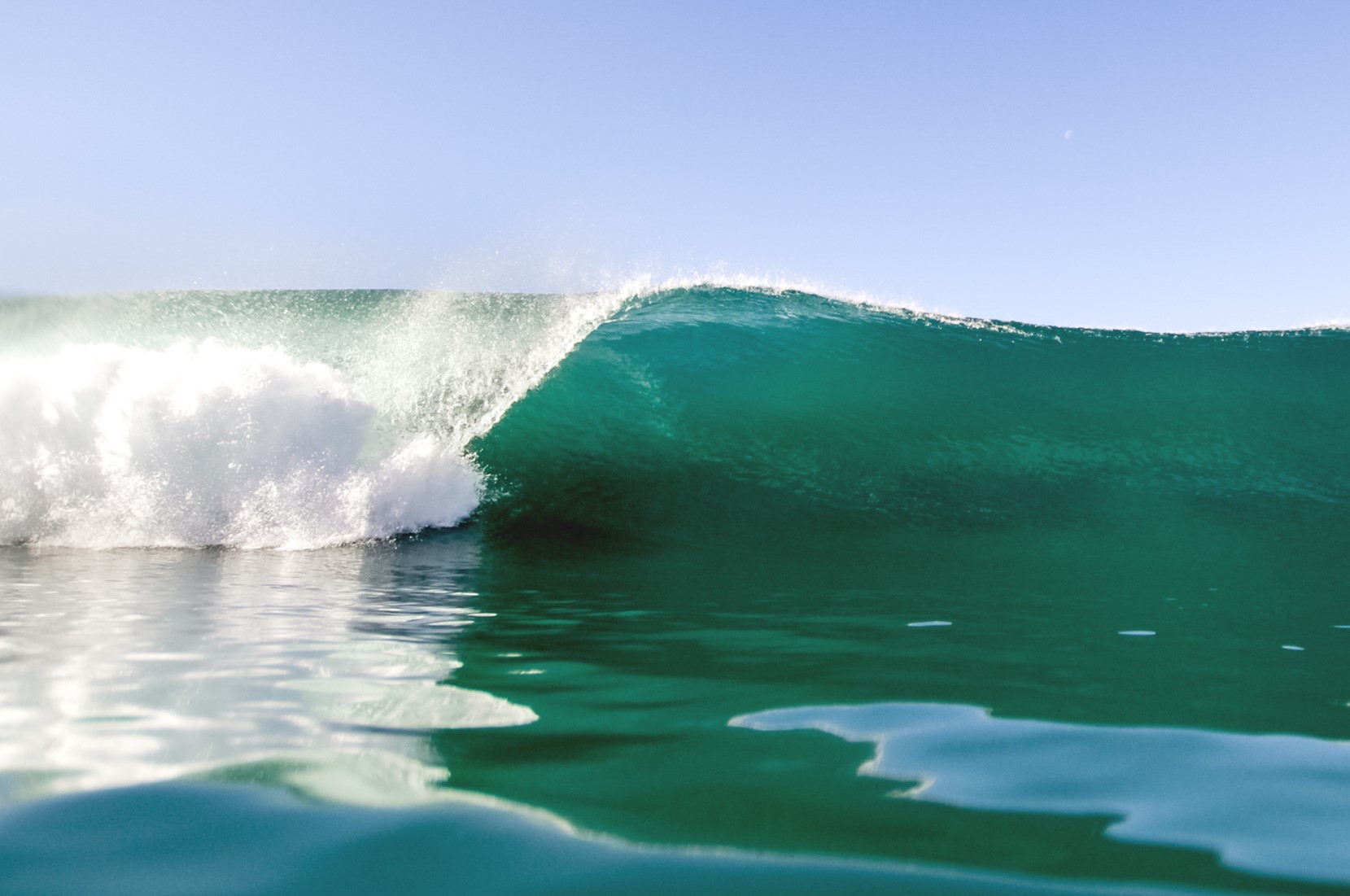
A Pacific Ocean plunging wave at Torrey Pines State Beach near San Diego, California.
Credit: Austin Schmid schmidy, public domain, via Wikimedia Commons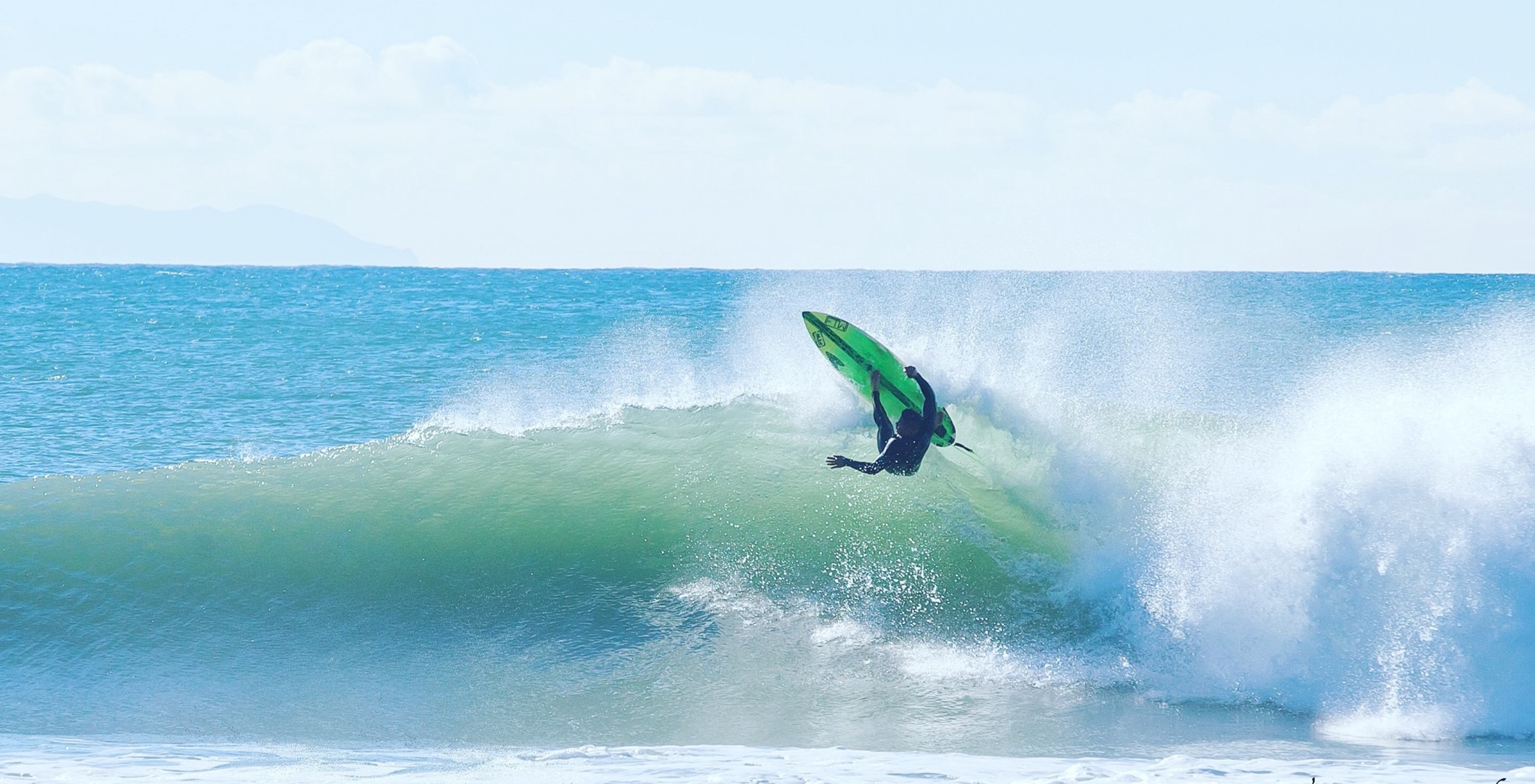
Surfing near Topanga, California.
Credit: Bobbyvaughnftw, via Wikimedia Commons

